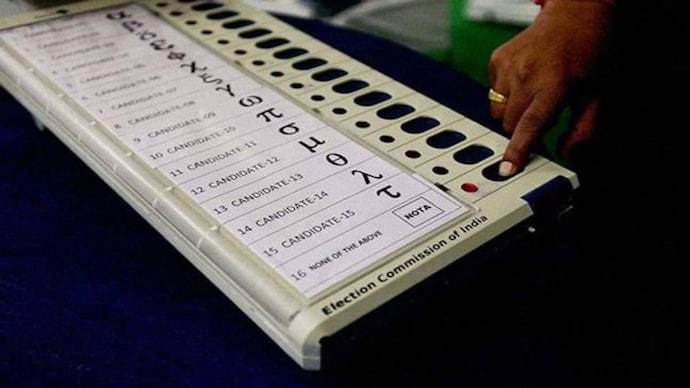The Election Commission of India announced the development of a prototype for a Multi-Constituency Remote Electronic Voting Machine (EVM) that would allow migrant voters to vote remotely.

Electronic Ballot Box (EVM)
- In India, electronic voting is the standard method of conducting elections with Electronic Voting Machines (EVMs).
- The system was developed and tested in the 1990s by the state-owned Electronics Corporation of India and Bharat Electronics.
- They were gradually introduced in Indian elections between 1998 and 2001.
Remote EVMs?
- Remote Electronic Voting Machines (RVM) allow multiple constituencies to be served from a single remote polling booth.
- The plan is to use voter portability as a pilot project in the 2023 Assembly elections in nine states.
- This means that if the pilot is successful, voter portability will be fully implemented in the 2024 general elections.
Need for RVMs
- Ensuring Participatory Elections: One of the major issues that must be addressed in order to improve voter turnout and ensure participatory elections is the inability to vote due to internal migration.
- Migration-based disenfranchisement: There were a variety of reasons why a voter did not choose to register in a new place of residence, thereby forfeiting the right to vote.
- Increasing voter turnout: The voter turnout in the 2019 General Elections was 67.4%, and the ECI is concerned about the issue of over 30 crore electors failing to exercise their franchise, as well as disparities in voter turnout across states/UTs.
Importance of the move
- A panacea for migration-induced deprivation: Out-migration due to the need for work, marriage, and education is the most common reason for rural people to leave their homes.
- Increasing voter turnout: Internal migration accounts for approximately 85% of all migration within the United States.
- Multiple booth targeting: A single remote polling booth can handle up to 72 different constituencies with this modified form of EVM.
Challenges for RVMs
Many political parties have already raised concerns about the inherent issues, such as-
- The Definition of Domestic Migrants
- Model Code of Conduct Implementation
- Keeping voting secret
- The ability of polling agents to identify voters
- Remote voting procedure and method, as well as vote counting
Technical issues
- Amendments to legacy laws: The Representation of the People’s Acts of 1950 and 1951, The Conduct of Election Rules of 1961, and The Registration of Electors Rules of 1960 are among the laws and rules that would need to be amended to implement remote voting.
- In the context of the legal constructs of “ordinary residence” and “temporary absence,” the definition of migrant voter would also need to be reworked in terms of retaining registration at the original place.
- The territorial constituency concept of remote voting, as well as defining remoteness as an outside constituency, outside the district, or outside the state, will need to be addressed.
- Enumerating remote voters-self declaration, ensuring secrecy of voting at remote locations, providing polling agents at remote voting booths, and ensuring voter identification to avoid impersonation are all administrative challenges.
- Problems with acceptance: Acceptance of EVMs has been a point of contention. This has somewhat subsided since the introduction of the paper-audit trial by voters (VVPAT).
Way ahead
- If implemented, the initiative has the potential to lead to a social transformation for migrants and reconnect them with their roots, as many are hesitant to enroll at their place of employment.
- Frequently changing residences and a lack of social and emotional connection to migration issues will no longer be obstacles.
Source: https://www.indiatoday.in/india/story/what-is-remote-electronic-voting-machine-and-how-will-it-help-2315402-2022-12-30
